Spazio Amato is the great neon light installation created by the artist Massimo Uberti for Hypermaremma 2020 as a tribute to the exceptional landscape of the Maremma Region, in Tuscany. The work is located in Terre di Sacra in the naturalistic oasis of Lake Burano; managed by WWF, and it is intended to establish a dialogue with the surrounding landscape. The aim of the artwork is to inspire the viewer to reflect on the unique character of the landscape and the value of preserving it.
Spazio Amato is the great neon light installation created by Italian artist Massimo Uberti for Hypermaremma 2020. The artwork should be read as a tribute to the exceptional landscape of the Maremma territory, in Tuscany.
The light installation is located in the heart of the naturalistic oasis of Burano Lake, and was realised with the collaboration of WWF - the world's largest organization dedicated to protecting the environment and endangered species, which also manages the Oasis. Spazio Amato aims to establish a dialogue between the viewer and the surrounding landscape, becoming an unusual as well as poetic "caption" which is able to encourage the viewer to reflect on the unique character of the territory and on the need to protect and preserve it in the future.
Massimo Uberti's research has always been focused on the expressive articulation of the paradigm of light as a possible and revealed space. On this occasion, he uses the neon light source also as a semantic trace to redesign the landscape that hosts the intervention. Fully embracing the purposes of Hypermaremma, the artist with this major site-specific installation presents an iconic work of art in dialogue with the place and the surrounding landscape.
Spazio Amato translates the time we are living through an ephemeral and poetic appearance that breaks for a brief moment the immutability of the Maremma territory.
This artwork was presented as part of the Hypermaremma Festival in 2020, which aim is to create a new galaxy of artworks and events of contemporary art, conceived to activate the Maremma through exhibitions, site-specific installations, talks, and sound experiences. National and international artists are invited to trigger a dialogue with the landscape and its ancient history.
Please highlight how the project can be exemplary in this context
The work was conceived by artist Massimo Uberti in April 2020, in the middle of the global pandemic crisis. It was thought of as a great semantic symbol that could involve the spectator and make them think about the exceptional nature of the place where it is located and the importance of preserving it over time. Considering the present circumstances, it was conceived in a wide open space; it represents a symbol that effectively and instantaneously narrates the land where it is located: the WWF Oasis of Burano Lake, the very first Italian Oasis. The Reserve covers approximately 410 hectares, plus a further 600 hectares taken away from hunting activities through the establishment of a closed fund in agreement with the owner of the land, the SACRA company.
The Oasis is located in the southern Maremma between Ansedonia and Chiarone cities in the municipality of Capalbio (GR) and it is the habitat for a huge variety of birds (over 300 species). Among the most characteristic are the coot, pochard, ferruginous duck, marsh harrier and water rail; among the mammals are porcupines, badgers, foxes, weasels, wild boars and, more recently, wolves.
Spazio Amato was conceived as a work that respects the territory and especially the animal and plant species that inhabit the nature reserve.The installation is dismantled at specific times of the year, corresponding to the life cycles of the animal species in the area, especially during the mating ones. When it is reinstalled, it is also programmed to follow the light activation and deactivation schedules in accordance with the needs of the animals living in the area. Finally, the brightness has been calculated in agreement with the managers of the Nature Oasis, so that a suitable intensity is chosen so as not to disturb or alter the animal and plant species in any way.
Please highlight how the project can be exemplary in this context
The work was conceived above all for a solitary experience and addresses the exceptional circumstances imposed by the contingency of the moment. It invites the viewer, struck by this evanescent caption of light, to reflect on the surrounding landscape and the importance of preserving its nature unchanged. In this context, the artist Massimo Uberti, who has always been engaged in research and experimentation on space, has projected onto the panorama of the Burano Lake Oasis the emotions of all those who enjoy its beauty.
From the very beginning, Uberti has been shaping space by intervening in it indirectly through the use of different languages: through projection by means of architectures of neon light; through light installations, first realised in the second half of the 1990s; and finally through writing, expressed in a number of recurring symbolic formulas such as necessary space, beloved space, expected space, infinite space and another space, which each time identify the place in which they are placed.
The essential and elegant aesthetics of the work not only perfectly expresses the artistic philosophy of the artist, but also fits perfectly into the surrounding landscape. Although the monumental dimension of the work, its simple lines, combined with the calibrated lighting, represent a perfect meeting point between contemporary aesthetics and timeless beauty. Moreover, throughout the design process of the artwork it was essential to consider the particular place where it would be located, thus leading the artist to imagine an intervention that would have the least possible impact - also at an aesthetic level - on the animal and plant species of the Reserve.
Please highlight how the project can be exemplary in this context
The work was designed with the primary intention of involving the local community, providing also a meeting point for them and those who visit the area mainly during the summer. Indeed, the large light installation was presented thanks to the collaboration with "Terre di Sacra": one of the area's oldest companies, which has been active since the early years of the last century. Terre di Sacra is one of the most appreciated and active companies of the Maremma territory, it is also well-known for its partecipation reclaming the entire area and making possible the establishment of Italy's first WWF Oasis in 1967. In addition to that, the construction of the artwork itself involved local workers and small companies that followed the technical implementation at all stages. It became a real opportunity for collaboration for all members of the community.
Inaugurated as part of a special edition, Uberti's installation gives the place the connotation of a "practised place" and "crossroads of mobility", as Michael De Certau indicates, in this case by the gaze of casual passers-by who, as Uberti himself states "with their gaze are able to change the landscape by "inhabiting" it: if we respect the nature of places, the essence of what was there remains. What changes is the habitat, not its soul". Spazio Amato suggests to look with renewed attention at what surrounds us, opening our gaze to new perspectives and unexpressed possibilities within apparently unchangeable circumstances.
Please highlight how this approach can be exemplary
Through the realisation and following promotion of Spazio Amato, Hypermaremma is committed to inviting the local community and the population in general to activate new points of view of the natural landscape. The aim of this is to reconsider the relationship between man and nature in a more frequent and familiar way.
The Burano Lake Naturalistic Oasis - the selected location for the project - was chosen as the ideal venue, as it was considered the best context to raise the population's awareness of environmental conservation and restoration as a shared responsibility.
The implementation of the work has become a real opportunity for all members of the community to work together, as well as raising awareness of the history of the WWF nature reserve and the historical heritage of the area, shedding light on local culture and prioritising the needs of the Maremma community.
The artwork Spazio Amato was the most visited work of contemporary art in Italy in 2020. A flow of over 30,000 visitors in just 2 months is the tangible proof of the success of the project. Indeed, the work has generated local tourism by providing income to the region, it has given visibility to a naturalistic oasis of international significance, it has raised awareness among the local and national population about environmental protection by highlighting the work of the WWF and, finally, it has generated curiosity and interest in contemporary art.
With the pandemic emergency there has certainly been a re-evaluation of the importance of living near green areas, being outdoors and caring for and protecting the natural environment around us. With Spazio Amato, Hypermaremma has worked to bring people to feel part of nature and to change their perspective in support of it.
Please also explain the benefits that derived from their involvement.
As previously illustrated, one of the goals of the Hypermaremma Festival is to operate in the local Tuscan territory, in full respect of the population that inhabits it and the traditions it preserves. One of the main focuses of the realisation of Spazio Amato was precisely to involve the local community in every stage of the project's conception and realisation. Bearing in mind the particular moment in which it was being presented, it immediately became clear that it was essential to involve local craftsmen and small companies, who followed its technical realisation, thus becoming a real opportunity for collaboration for all the members of the community.
At a time of global pandemic emergency, Spazio Amato was the only exhibition that could be seen and experienced free of charge in Italy. The success of the project stemmed above all from the strong need of the local community and the wider population to return to a personal interaction not only with art, but in particular with nature and with one another.
The work Spazio Amato is part of the Hypermaremma project, a non-profit cultural association for the production and promotion of artistic events in the Maremma through the intervention of contemporary artists; invited to interact with the territory and its history. With a future-oriented perspective, it aims to pursue beauty in dialogue with the territory, leaving a sustainable footprint through the promotion of art. Respect for the territory and dialogue with artists and the community are the founding elements for the creation of new ideas.
Therefore, Hypermaremma was created to offer an alternative to the traditional and elitist institutional art, providing a completely free and inclusive fruition of contemporary artworks, related to a still often wild territory such as the Maremma. In this way, the artists invited to collaborate are "forced" into a confrontation with the landscape that involves an understanding of its essence, which inevitably leads them to "experience" it in order to understand its spirit. As Uberti himself states, <<Basically you have to observe and be a spectator in turn, simply keeping your senses open. You have to be receptive to everything that is there, that surrounds you and listen to what this land offers you; in this specific case it is a WWF oasis, which is no small thing if we think of how many elements have to play a part in an intervention of this kind in order to respect the balance of this silent Eden without upsetting it>>.
This approach encourages a renewed reflection and a deeper respect for the natural environment, the local population and the animal and plant species that inhabit it. In addition, one of the fundamental objectives of the festival is to bring art to a new audience, making it easily accessible, intuitive, fun and informative. The aim is still that of arousing an interest in contemporary art that has perhaps never before been perceived, always keeping an eye on the territory.
Please provide clear documentation, communication of methodology and principles in this context.
Spazio Amato is just one of the many seasonal projects of Hypermaremma, which every year works in the Maremma region, installing works of contemporary art by Italian and international artists in new locations around the Tuscan landscape.
Over the past few editions, Hypermaremma has designed and produced other equally valid projects, echoing the model of Massimo Uberti's work, albeit in a different way. Indeed, in 2019, a collective exhibition was organised in the Antica Città di Cosa, featuring the works of 14 artists in dialogue with the place. The Antica Città di Cosa is an archaeological site on the Ansedonia promontory that preserves the ruins of an ancient Roman settlement dating back to 273 BC. It involved a series of sculptural and installation works of great impact in synergy with the history and environment in which they were located. Thanks to the works of art, a path was traced that involved the visitor, leading him to rethink the place, its history and traditions.
Similarly to Hypermaremma, there are nowadays several land art sites, created for the promotion of art but above all for the revaluation of the territory and its history, its heritage, the natural environment in which they are inscribed and the involvement of the local population - as promoters of sustainable tourism. Some examples: Valle del Belice in Sicily with Burri's Cretto, Fiumara d'Arte in Sicily, Campo del Sole in Umbria, Respirart in Trentino-Alto Adige, Arte Sella in Trentino and many others.
But there are not only Italian examples of projects similar to ours: just think of Desert X; the exhibition of Desert Biennial, a charitable organization founded in 2015. It is meant to bring attention to the valley's environment through the display of works by emerging artists. Themes include climate change, immigration, tourism, gambling, and Native American culture.
Spazio Amato quickly became an icon of the Maremma and its territory, becoming the most visited work of contemporary art in Italy in the summer of 2020. In 2021, thanks to the commitment of the Terre di Sacra company, the support of WWF Italy and the Burano Lake Oasis, the work became a lasting part of the Maremma landscape as its permanently installed monument.
A video showing the artwork and the landscape of the Natural Reserve where it's located: https://youtu.be/iyzWhQVHiGE
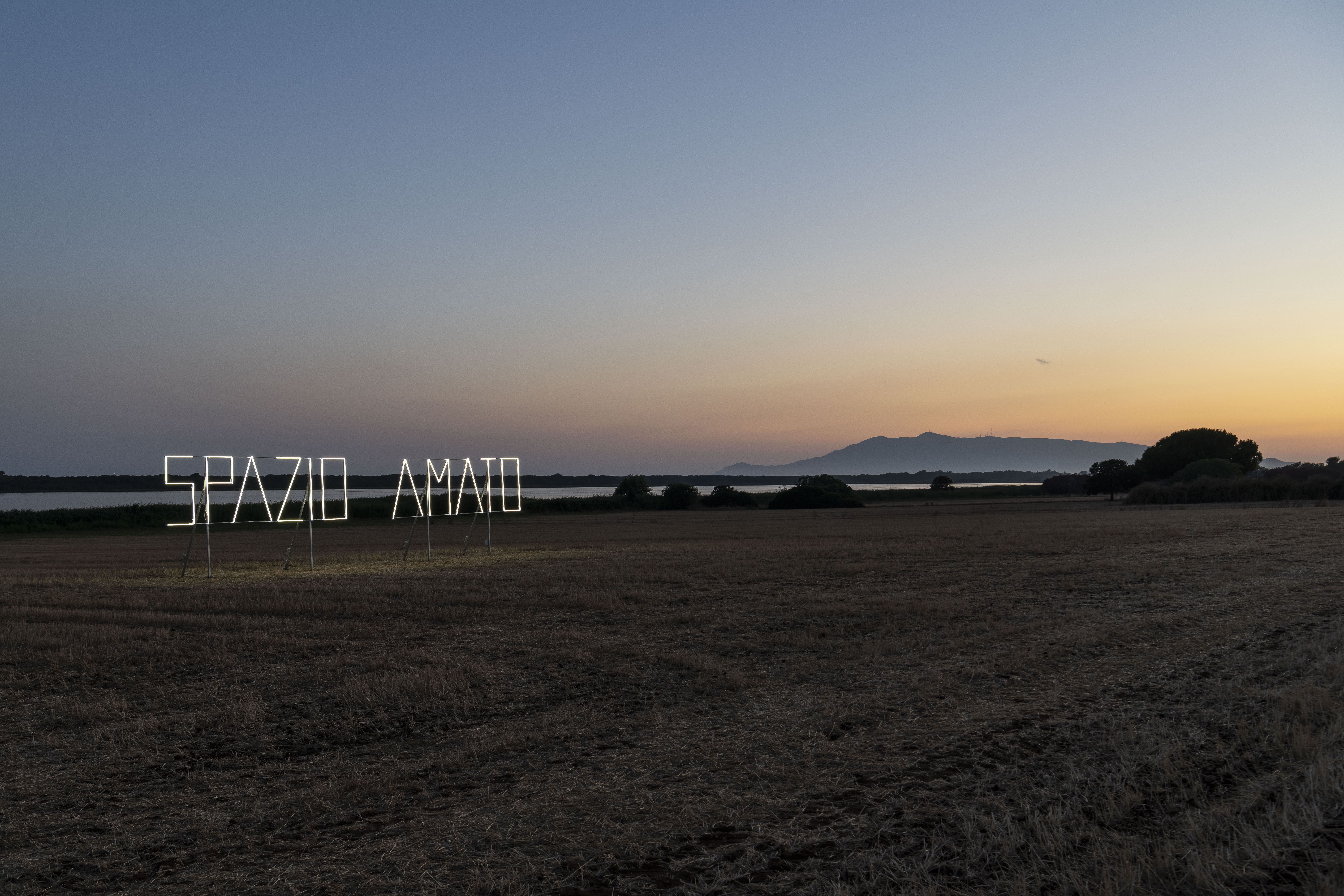
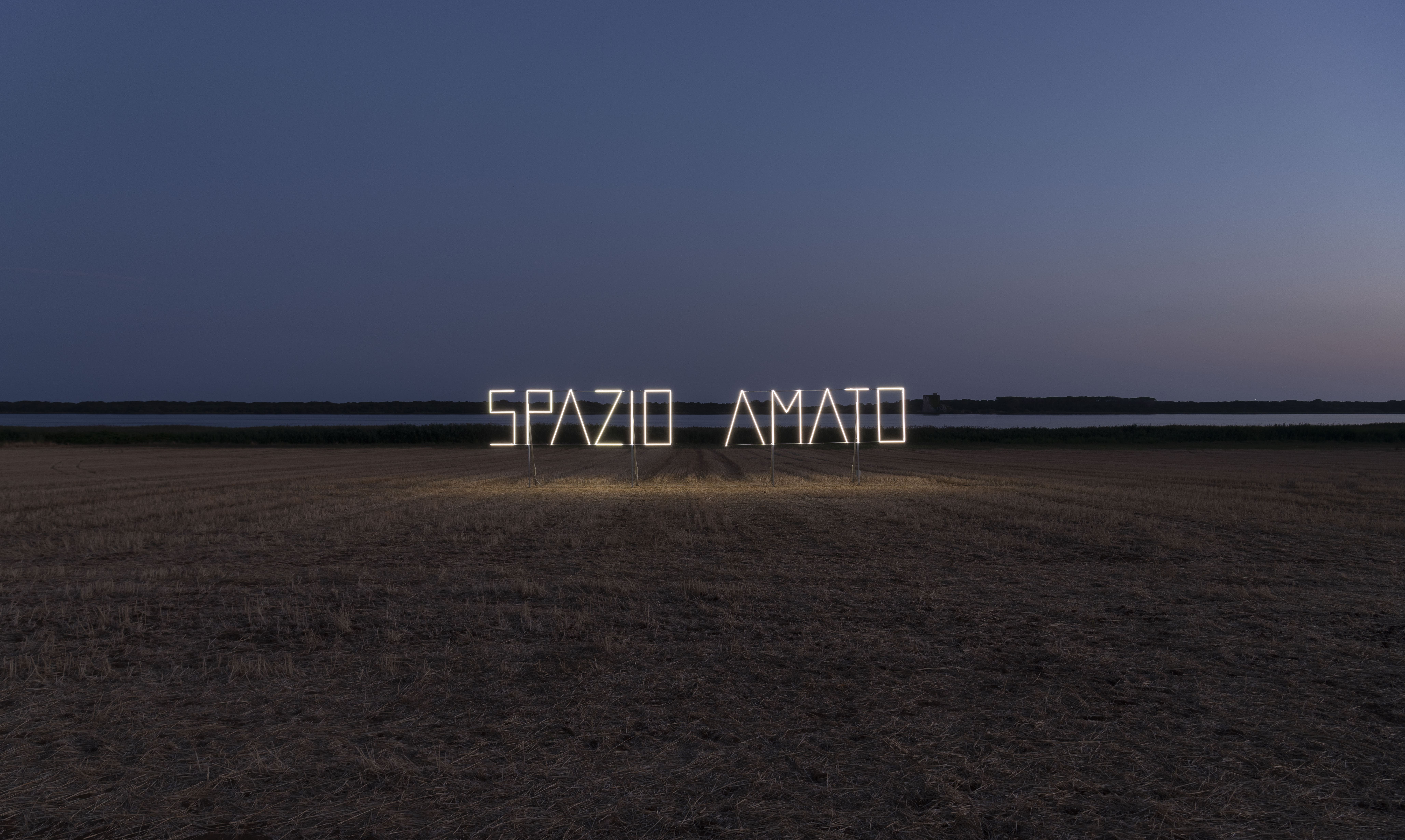
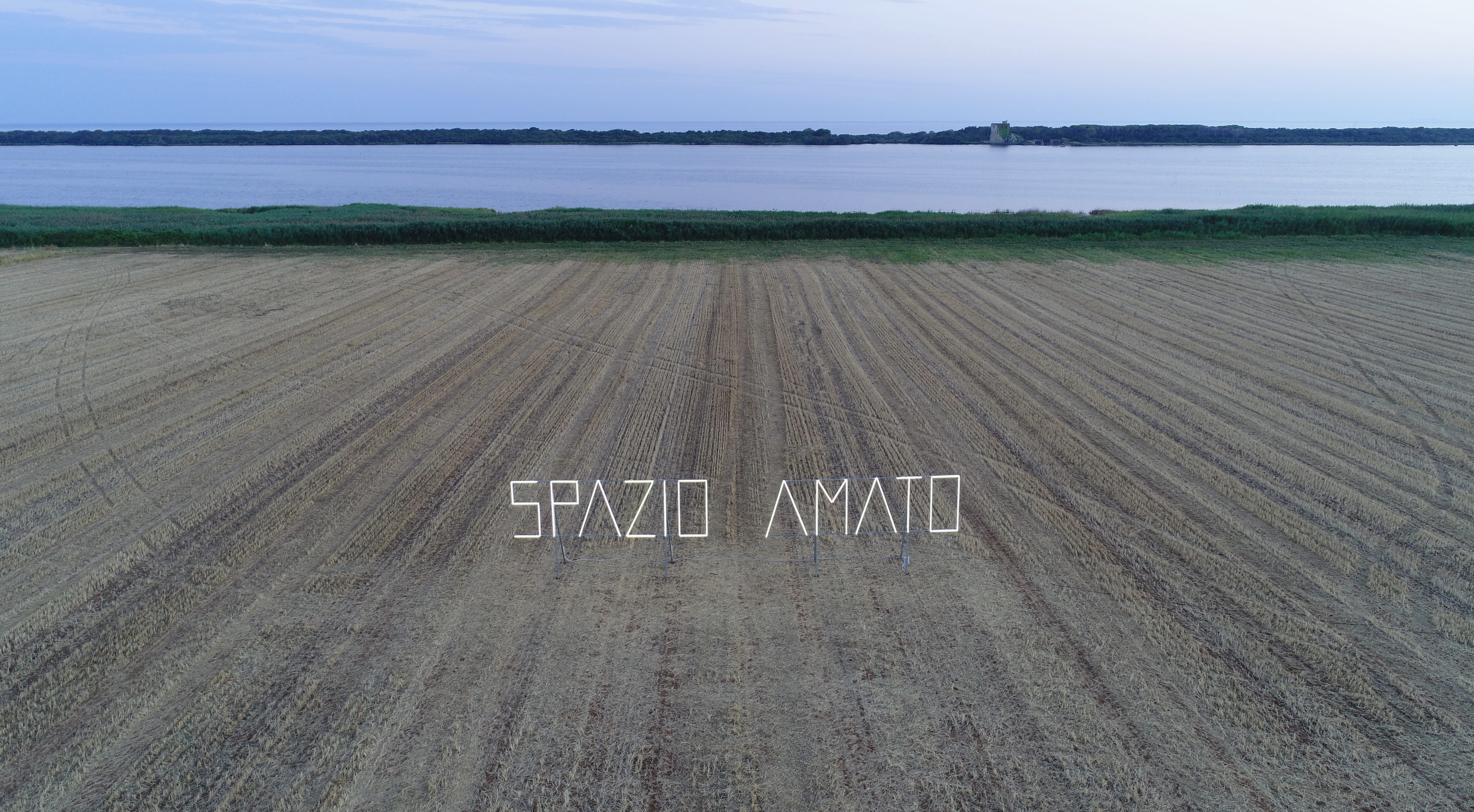
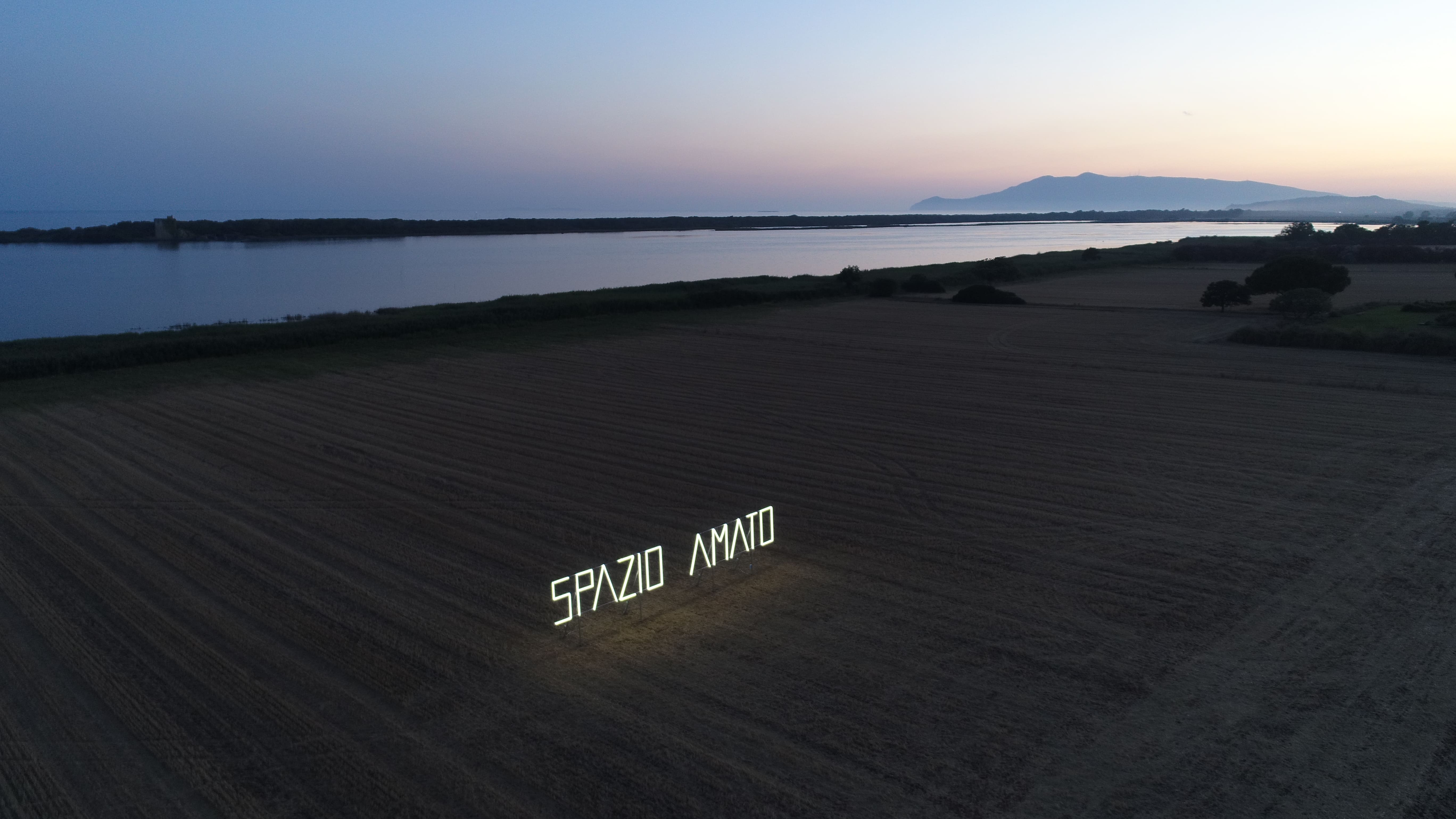
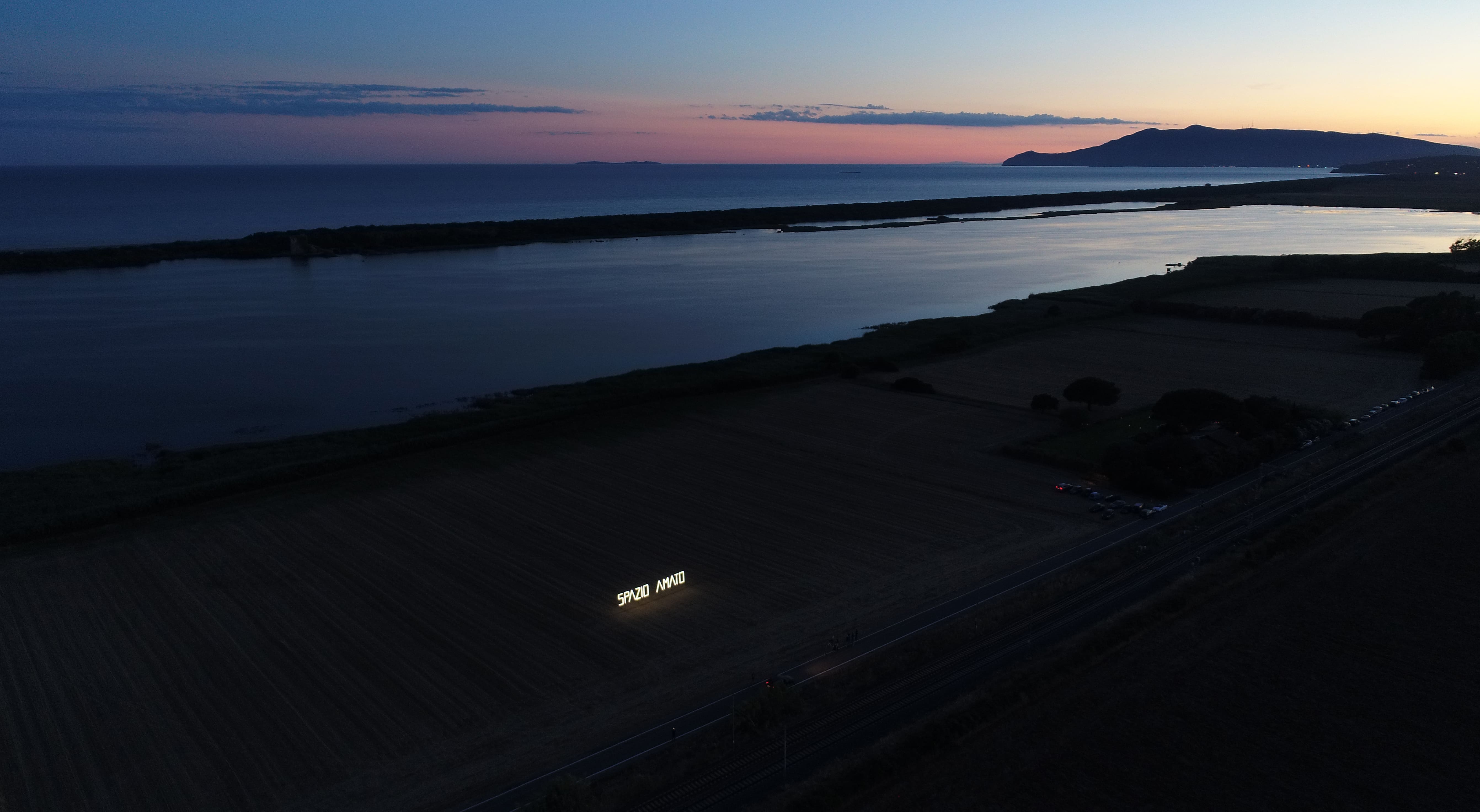
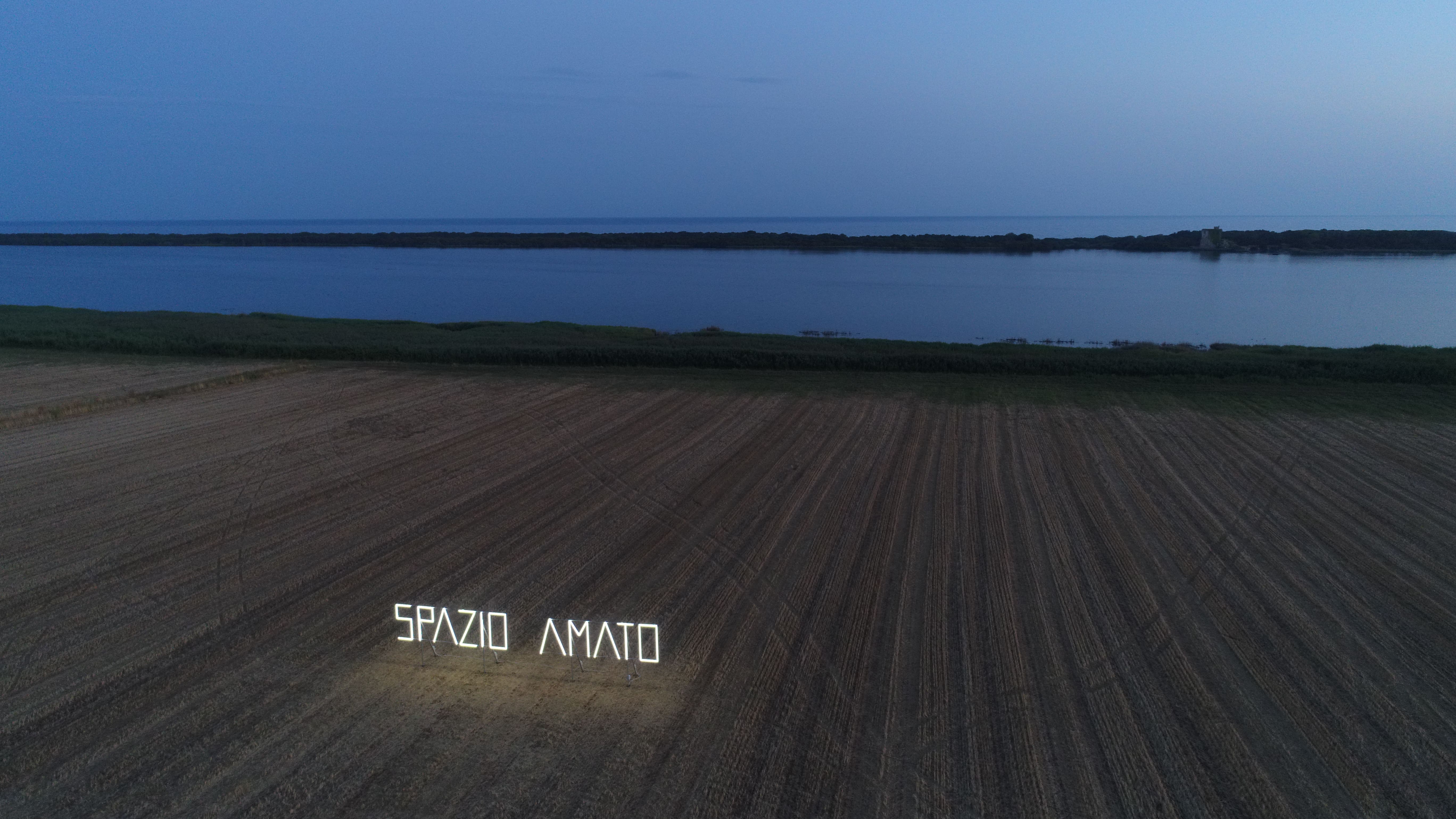
@Hypermaremma, 2020
Content licensed to the European Union.